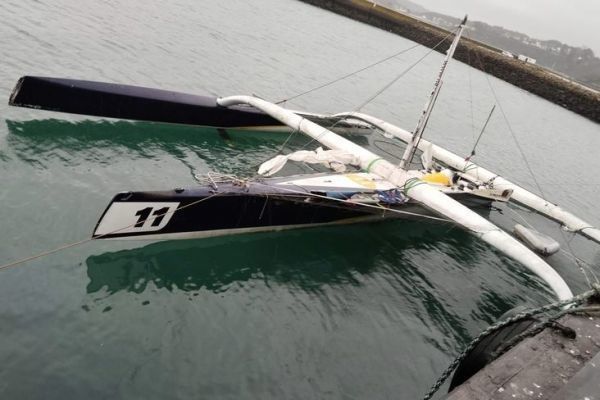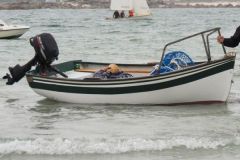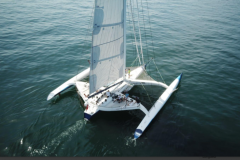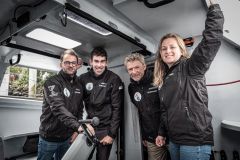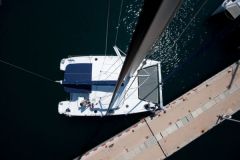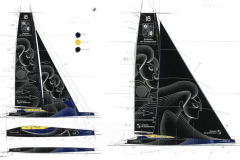A legendary trimaran
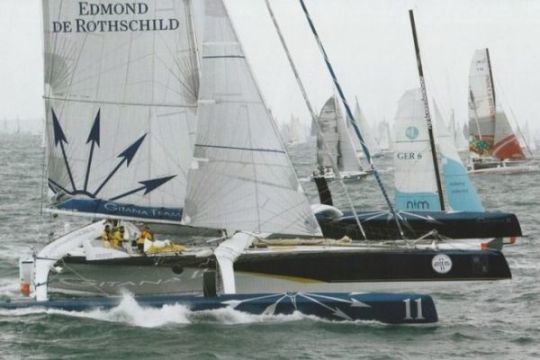
Launched in 2001 under the colors of Belgacom, skipper Julien Reemers' new trimaran was originally an ORMA, successively skippered by Jean Luc Nélias, Fred le Peutrec and Loick Peyron. She went on to win the 2006 Route du Rhum with Lionel Lemonchois at the helm. In 2009, the boat was lengthened to 77 feet to remain competitive in the face of the arrival of large multihulls, foreshadowing the creation of the Ultim class.
In 2015, the yacht was taken over by Antoine Rabaste and his company Grand Large Emotion, which embarked VIP crews, but capsized in 2019 off Portugal. The crew was unharmed, and the trimaran was towed back to Portugal. Righted, she is stored at an anchorage awaiting a buyer.
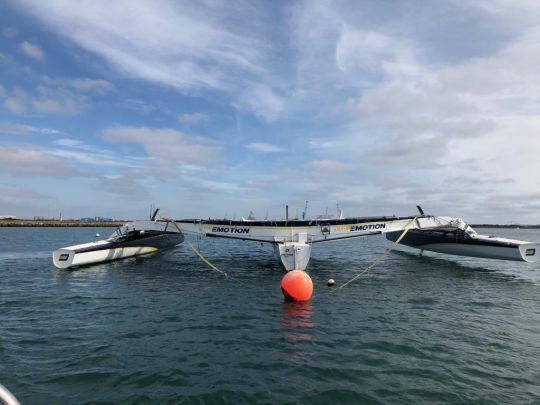
A return to the Malouin region
Offshore racer and shipyard manager in Saint Malo, Julien Reemers, in association with André O'Neil, becomes the new owner of the damaged multihull. After 3 years at anchor in Aveiro, the trimaran had lost some of her superb looks. Regularly visited by thieves and seagulls, this former glory is a sight to behold, but despite appearances, the structure is intact.
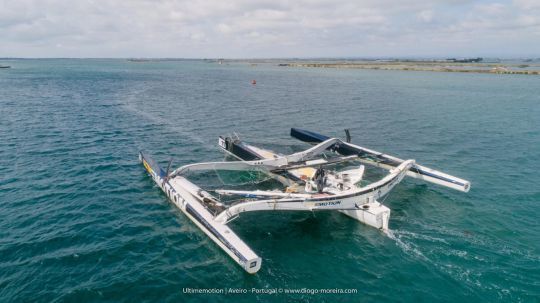
Julien decides to repatriate the trimaran by sea. Without its mast, the multihull could not return to Brittany on its own. Several estimates were drawn up with towing companies, but the costs were prohibitive.
Julien then decided to put together a team to go and get the boat. They left Saint Malo in early August aboard an Antarès 12. The aim was to tow the 77-foot platform with the Bénéteau launch, supported by the trimaran's engine and a small jury rig.
After 4 days at sea, the trimaran was coupled up. And the bad news keeps piling up. Several indelicate acts have been committed on board, notably on the multihull's engine.
What's more, the Portuguese authorities forbade them to leave the port, on the pretext that the trimaran had no mast. After several weeks of negotiation, the team succeeded in proving their case to the authorities, and finally left the anchorage.
Terrible weather
As soon as they set off, the convoy was caught by a low-pressure system, and had to make a stopover in Porto. At the beginning of September, they call at La Coruña, waiting for a favorable weather window to cross the Bay of Biscay.
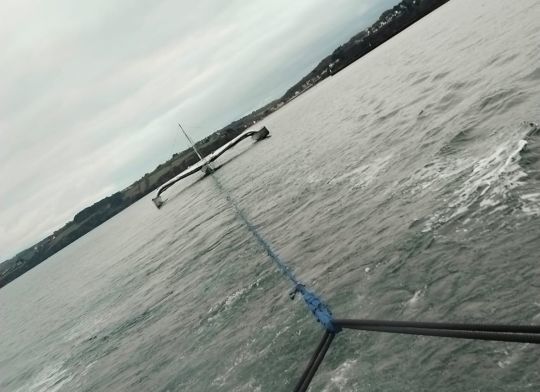
But one depression followed another, and the team had to wait in port for several weeks. In the meantime, they have to cope with a certain amount of local hostility, and endure a scam when filling up with diesel, vandalism of the battery bank, and a surprising break in the mooring in the middle of the night.
A fine act of maritime solidarity
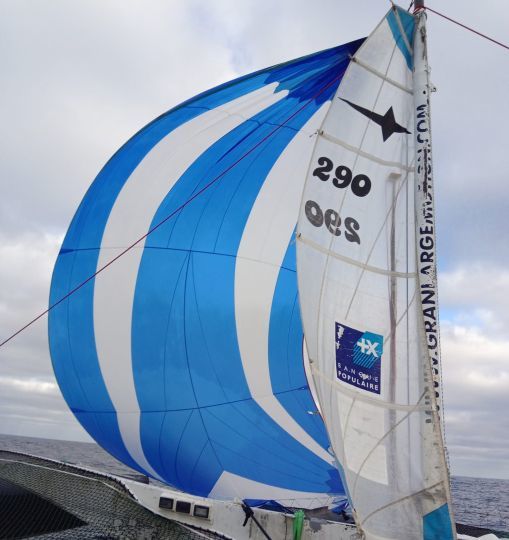
Leaving Corunna, the convoy set course for Brittany. But during the night, the trailer broke, and the speedboat crew lost sight of the trimaran, with two crew on board. Both crews had anticipated this eventuality, and did not panic. Then the trimaran, at reduced speed with its makeshift rig, crossed the path of a container ship bound for Brittany. The crew offered to take the multihull in tow to bring them closer to the tip of Brittany.
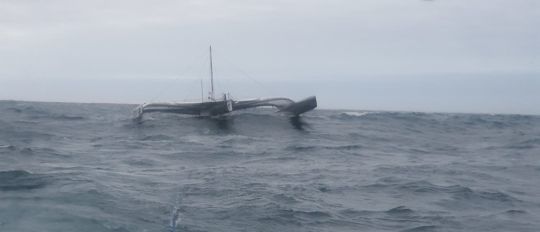
After perfect maneuvering of the imposing 200m vessel, a reel with a trailer was struck on the central hull, and the convoy set off again.
After several hours of towing at 16 knots, the tug was released as they approached the Iroise Sea, where the Antarès awaited them, taking over to call at Douarnenez.
The crew waited several more days in the fishing port due to very unstable weather conditions. As fate would have it, the crew set course for Saint-Malo the same week as the start of the Arkea Ultim Challenge.
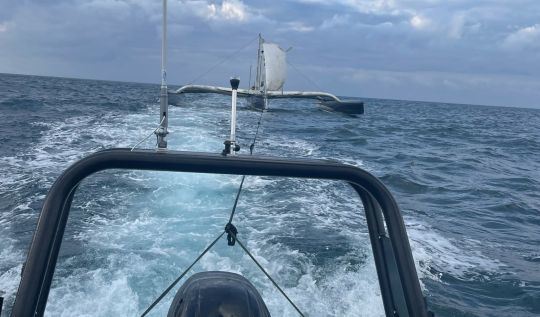
An engine problem on the Antarès forced them to put in at Lézardrieux, then the convoy finally arrived in Saint Malo, where the trimaran was moored in the basins of the corsair city, much to the delight of her owner:
" Despite their share of troubles, the crew led by Kévin never faltered. Many would have given up. They didn't. Thanks also to the support of the shore team, who were on hand day and night to deal with all the problems "
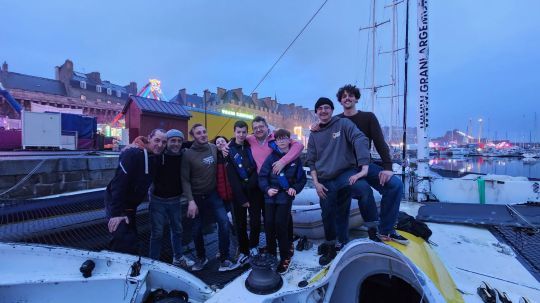
Transat Jacques Vabre and Route du Rhum in the sights
After 6 months of a voyage that was supposed to last 3 weeks, Julien and his partner André O'Neil are savoring this first victory. The next step will be to find partners willing to join them in this extraordinary project. And the program does not lack ambition.
Julien's goal is to refit the trimaran and enter the Transat Jacques Vabre 2025, then the Route du Rhum 2026, and finally the Jacques Vabre 2027, which Julien will race with his son Louis, who will be 18 at the time!
Before that, the platform will have to undergo a major refit to regain its full potential. And go head-to-head with the fastest multihulls on the planet.

 /
/ 